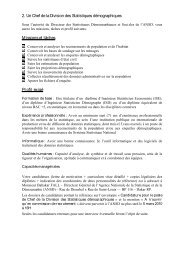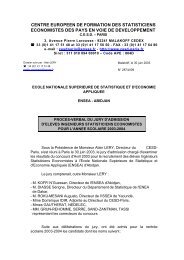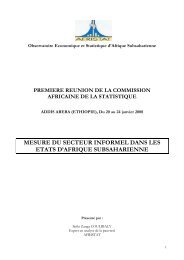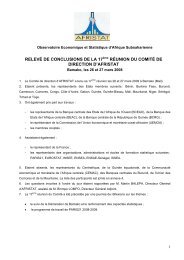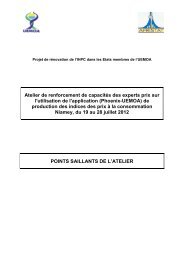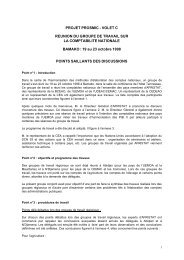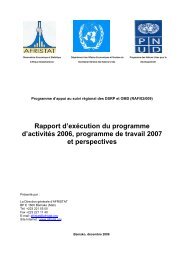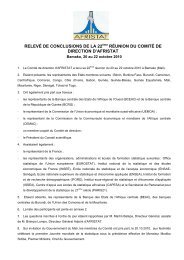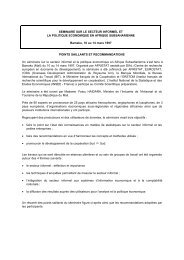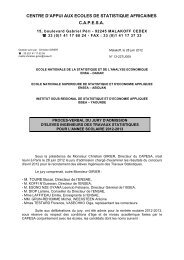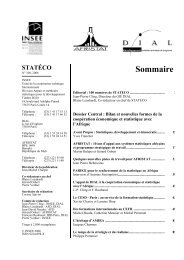Global Purchasing Power Parities and Real Expenditures - Afristat
Global Purchasing Power Parities and Real Expenditures - Afristat
Global Purchasing Power Parities and Real Expenditures - Afristat
Create successful ePaper yourself
Turn your PDF publications into a flip-book with our unique Google optimized e-Paper software.
172 <strong>Global</strong> <strong>Purchasing</strong> <strong>Power</strong> <strong>Parities</strong> <strong>and</strong> <strong>Real</strong> <strong>Expenditures</strong>in the fields of prices or national accounts. To overcomeshortcomings of previous rounds, several major methodologicalimprovements were implemented, with the TAGproviding technical advice.Regional offices coordinated ICP work in each of thefive geographic regions (Africa, Asia-Pacific, Commonwealthof Independent States, Latin America, <strong>and</strong> WesternAsia) through the African Development Bank (AfDB); theAsian Development Bank (ADB); the Statistical Office ofthe Commonwealth of Independent States (CISSTAT), inpartnership with the State Statistical Service of the RussianFederation (Rosstat) <strong>and</strong> the Bureau of Economic Analysis(Moscow); Statistics Canada, in cooperation with theEconomic Commission for Latin America <strong>and</strong> the Caribbean(ECLAC); <strong>and</strong> the Economic <strong>and</strong> Social Commissionfor Western Asia (ESCWA). In addition, the economiesincluded in the regular PPP program run by OECD <strong>and</strong>Eurostat were treated as though they were in an autonomousregion for the purposes of incorporating their estimatesinto the worldwide estimates.In most economies, different agencies were involved inproviding the national accounts <strong>and</strong> prices data for the ICP.In such cases, one agency was nominated as the nationalcoordinating office, <strong>and</strong> within that agency a national ICPcoordinator was appointed. The main roles of the nationalcoordinator were to ensure that the economy’s ICP data(national accounts, prices, <strong>and</strong> wages) were correctly estimated,that statistical <strong>and</strong> field staff (involved in collectingprices) were trained in the concepts underlying the ICP<strong>and</strong> the practical implications for collecting prices, that datawere edited <strong>and</strong> entered into the ICP database, <strong>and</strong> thatediting queries from the regional coordinator were h<strong>and</strong>ledpromptly. The national coordinators also attended the datavalidation workshops that were held in each of the regionsto check the consistency of the data supplied within eachregion.There was close liaison between the World Bank, Eurostat,<strong>and</strong> OECD during both the planning <strong>and</strong> operationalphases of the 2005 ICP. The aim was to incorporate theEurostat-OECD results directly into the ICP by treatingthe Eurostat-OECD program as a sixth “region” in theworld for ICP purposes. The techniques used by Eurostat<strong>and</strong> OECD differ in some respects from those used in theother regions because the Eurostat-OECD program hasdeveloped particular methods over the years that could notalways be replicated in other regions. However, the closerelationships between the coordinating organizations havemeant that the results could be satisfactorily integratedwith each other despite the different procedures used.



